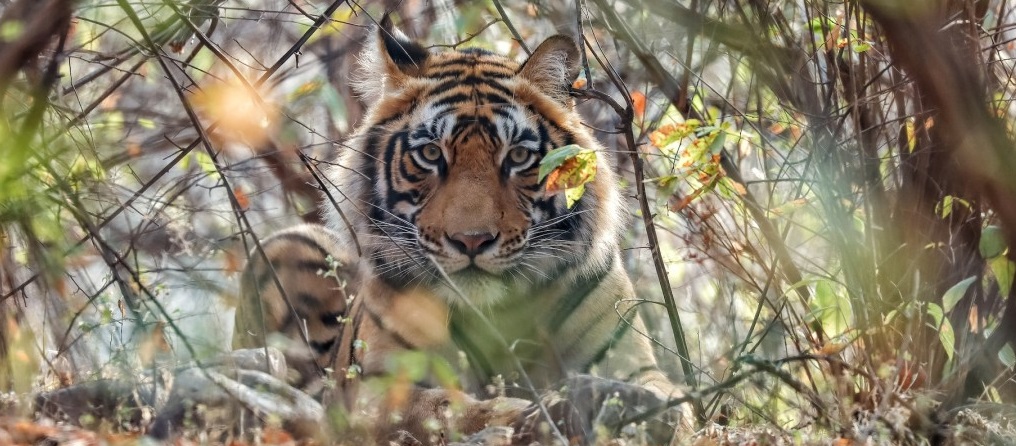Panna National Park, a hidden gem located in the heart of India, is a treasure trove of biodiversity and natural beauty. This wildlife sanctuary, spanning over 542 square kilometers, is a testament to the country's rich ecological heritage. Panna is not just a park; it's an immersive experience that captivates visitors with its diverse flora and fauna, breathtaking landscapes, and a deep sense of tranquility.
The Enchanting Wilderness of Panna
Nestled in the Vindhya Mountain range, Panna National Park is renowned for its stunning landscapes, which include teak and sal forests, grasslands, and the sparkling Ken River. The park's topography is a blend of plateaus, gorges, and serene riverbanks, creating a picturesque setting for wildlife enthusiasts and nature lovers alike.
One of the most significant highlights of Panna is its tiger population. After facing a near extinction crisis in 2009, when the park lost all its tigers to poaching, a concerted conservation effort was launched. Tigers were reintroduced to the park, and today, Panna stands as a success story, showcasing the resilience of nature and the effectiveness of conservation strategies.
Flora and Fauna: A Biodiversity Hotspot
Panna's biodiversity is nothing short of extraordinary. The park is home to more than 200 species of birds, making it a paradise for bird watchers. From the majestic Indian Pitta and the colorful Paradise Flycatcher to the crested serpent eagle and the king vulture, the avian diversity is remarkable.
Mammals are another major attraction in Panna. Besides tigers, the park shelters leopards, wild dogs (dholes), sloth bears, and hyenas. The Indian wolf, although elusive, also roams these lands. Herbivores such as sambars, chitals, nilgais, and chinkaras can be frequently spotted grazing in the meadows.
The aquatic life in the Ken River adds another layer of richness to Panna's biodiversity. The river is home to mugger crocodiles and the highly endangered gharial. During a boat ride on the Ken, one can often spot these reptiles basking on the riverbanks.
Exploring Panna: Safaris and More
The best way to experience Panna Wildlife is through a jeep safari. Safaris are conducted twice a day, during the early morning and late afternoon, which are the best times to spot animals. The thrill of driving through dense forests and open grasslands, with the possibility of encountering a tiger or a pack of wild dogs, is unparalleled.
For a more intimate experience with nature, a boat ride on the Ken River is highly recommended. This tranquil journey not only offers a chance to see crocodiles and birds up close but also provides a unique perspective of the park's landscape.
Panna is also rich in cultural heritage. The ancient Pandav Falls and Caves, associated with the epic Mahabharata, are located within the park. These falls, cascading down from a height of about 30 meters, form a serene pool that is believed to have been a resting place for the Pandavas during their exile.
How to Get There
Panna National Park is accessible from several major cities. The nearest airport is in Khajuraho, approximately 25 kilometers away, which is well connected to Delhi and other major cities. The nearest railway station is also in Khajuraho. From there, one can hire a taxi or take a bus to reach the park.
Conclusion
Panna National Park is more than just a wildlife sanctuary; it is a living testament to the resilience of nature and the power of conservation. Whether you are a wildlife enthusiast, a bird watcher, or someone seeking solace in nature, Panna offers an unforgettable experience. Its diverse ecosystems, rich cultural heritage, and the success story of tiger conservation make it a must-visit destination for anyone passionate about wildlife and nature.



